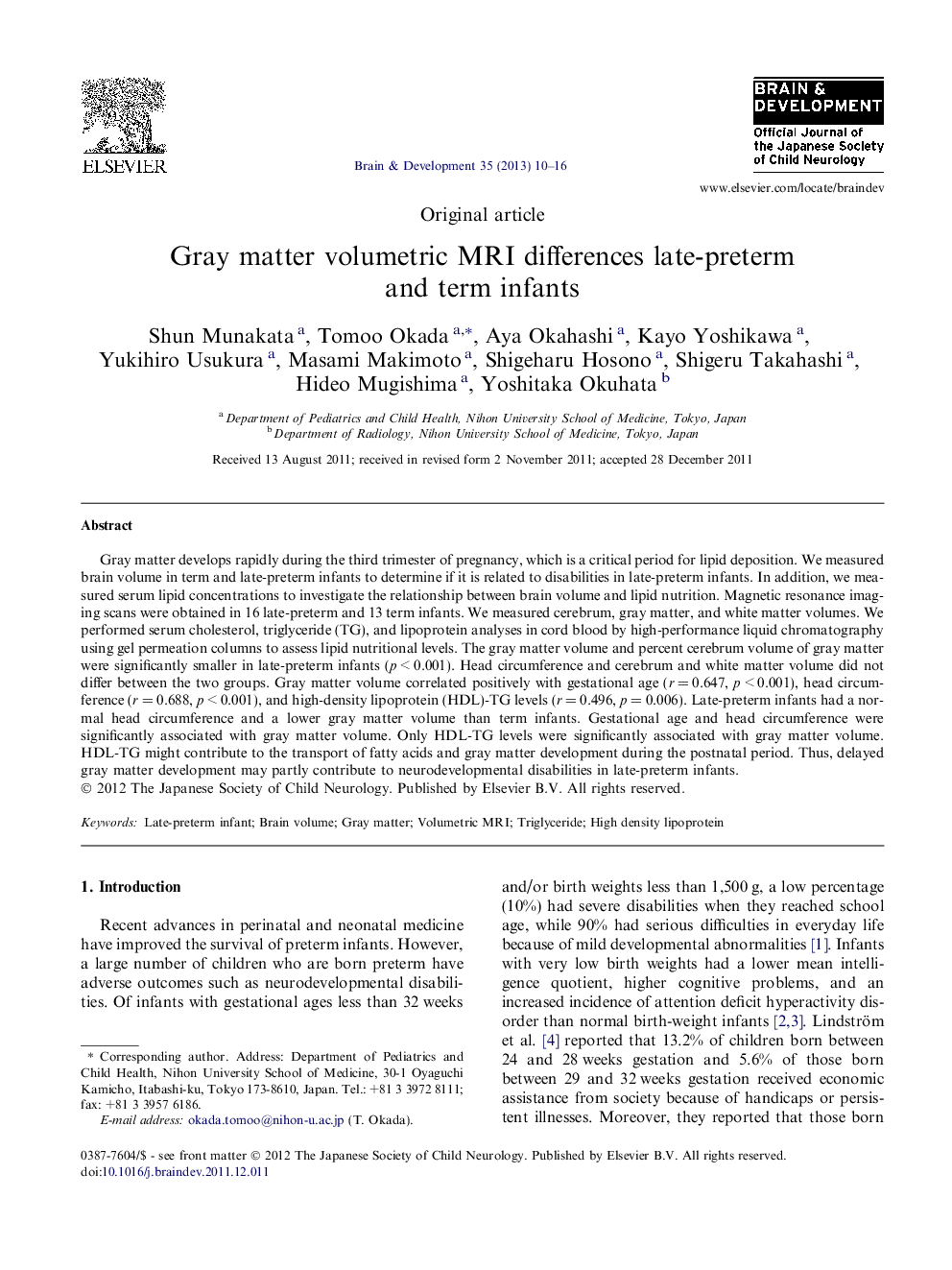| Article ID | Journal | Published Year | Pages | File Type |
|---|---|---|---|---|
| 3037325 | Brain and Development | 2013 | 7 Pages |
Gray matter develops rapidly during the third trimester of pregnancy, which is a critical period for lipid deposition. We measured brain volume in term and late-preterm infants to determine if it is related to disabilities in late-preterm infants. In addition, we measured serum lipid concentrations to investigate the relationship between brain volume and lipid nutrition. Magnetic resonance imaging scans were obtained in 16 late-preterm and 13 term infants. We measured cerebrum, gray matter, and white matter volumes. We performed serum cholesterol, triglyceride (TG), and lipoprotein analyses in cord blood by high-performance liquid chromatography using gel permeation columns to assess lipid nutritional levels. The gray matter volume and percent cerebrum volume of gray matter were significantly smaller in late-preterm infants (p < 0.001). Head circumference and cerebrum and white matter volume did not differ between the two groups. Gray matter volume correlated positively with gestational age (r = 0.647, p < 0.001), head circumference (r = 0.688, p < 0.001), and high-density lipoprotein (HDL)-TG levels (r = 0.496, p = 0.006). Late-preterm infants had a normal head circumference and a lower gray matter volume than term infants. Gestational age and head circumference were significantly associated with gray matter volume. Only HDL-TG levels were significantly associated with gray matter volume. HDL-TG might contribute to the transport of fatty acids and gray matter development during the postnatal period. Thus, delayed gray matter development may partly contribute to neurodevelopmental disabilities in late-preterm infants.
